11 Rites of Passage for Every DIY Mechanic
Read all the books you want. Watch all the TV shows and YouTube mechanic videos that have ever been filmed. Sit and have a conversation with everyone who has turned a wrench. You still won’t be a mechanic, because practice and experience cannot be taught.
When younger enthusiasts recount certain adventures (or misadventures) to those with a few more years in the hobby, the seasoned folks will nod along. A mechanic’s rites of passage often need no explaining; by definition, these experiences have become universally accepted as ones that you must encounter and conquer to become proficient.
Which of these 11 rites of passage have you experienced, and which do you think changed you the most?
Rite of Passage #1: Roadside repair with makeshift parts
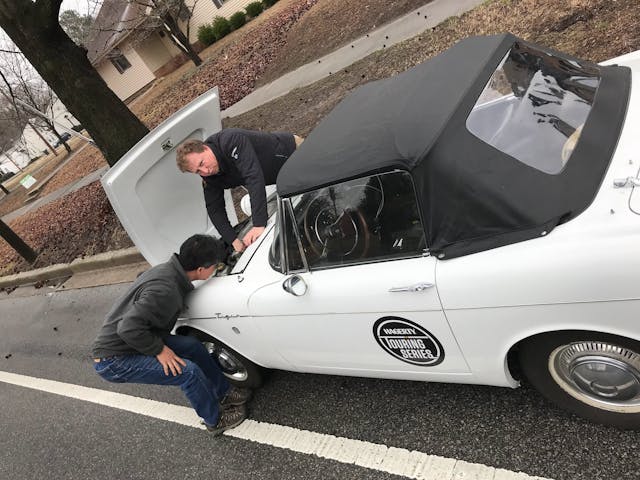
Whether on the road or in the shop, there comes a time when what you have is all you’ve got, and what you have just needs to work. Gaskets cut out of beer packaging, throttle cables made of shoestrings, or bailing wire on a part or piece that should be properly connected, but isn’t … If you understand a system well enough to engineer a functional fix on the fly, you truly understand how that system works.
Rite of Passage #2: Busted knuckles
You know the bolt is about to break free, so you give it a little extra oomph—and slam your hand into something. Usually, that something is heavy, rusty, or sharp … possibly, all three. Keep a record of your last tetanus shot handy, and know that we’ve all been there. Pulling towards yourself is often safer, except when it comes to cutting tools or other sharp implements.
Rite of Passage #3: Trapped tools
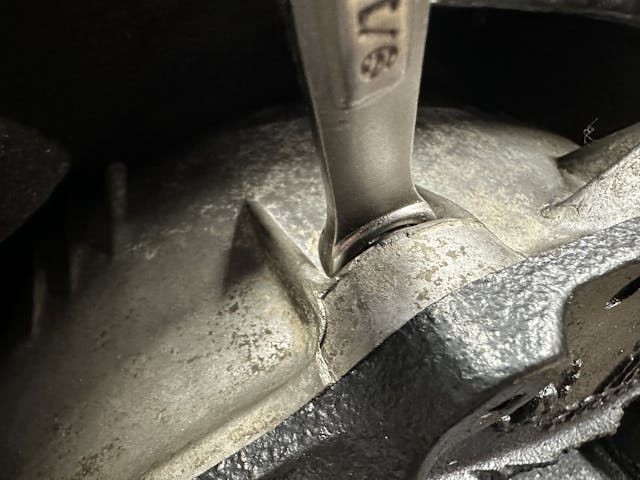
The order of operations during disassembly and assembly is important—but you’ve got to pay attention to your tools, too. We’ve all been in situations when the excitement of a bolt coming loose makes us forget the limited space we’re working with, and suddenly our wrench is trapped between a bolt and a hard place.
Rite of Passage #4: Broken hardware
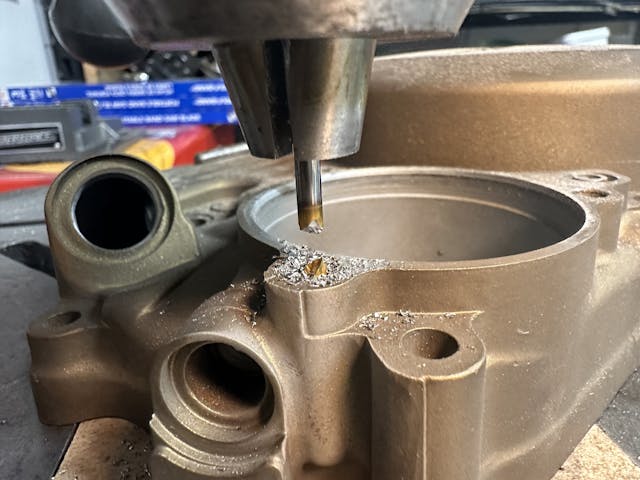
When a bolt chooses to Marie Antoinette itself, or threads stretch past the plasticity point and become unusable, progress can get tough. The fact of the matter is that rookies are more likely to break hardware, but there is a bit of a bell curve: As you tackle more and more projects, the quality of your work often rises; and then, as you gain confidence to handle the problems you now expect to encounter, the quality of your work tends to dip. Learning new methods for dealing with broken and stuck hardware is a never-ending quest for any wrench, green or seasoned.
Rite of Passage #5: Buying the shop manual
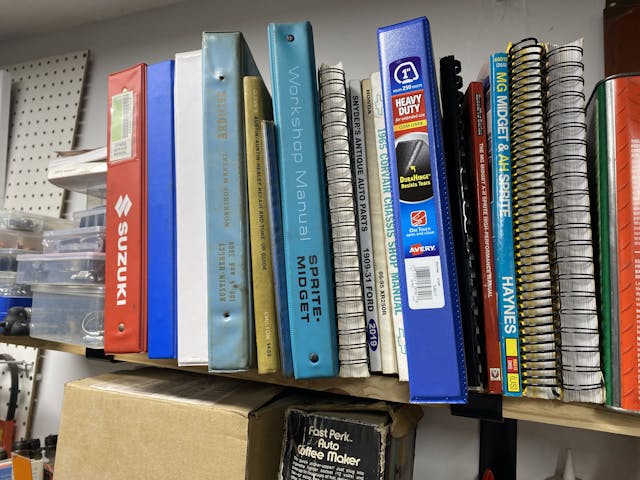
Just about everyone went through a phase when they felt as though they knew everything. Most advance out of such a state to understand that, even with everything they know, the shop manual knows more. Learning just how important and helpful a shop manual can be is often a freeing experience: Buying one is the first step to being self-sufficient because it allows you to solve problems without calling in experts or endlessly searching the web.
Rite of Passage #6: Disappearing parts

How else are you going to learn to organize your shop if you never experience the mildly panicked search for something you sat down right there? Everyone who ever gave you advice about doing DIY work probably told you to bag and tag parts and hardware, but most of us had to learn the benefits of organization the hard way to truly understand them.
Rite of Passage #7: Endless parts search
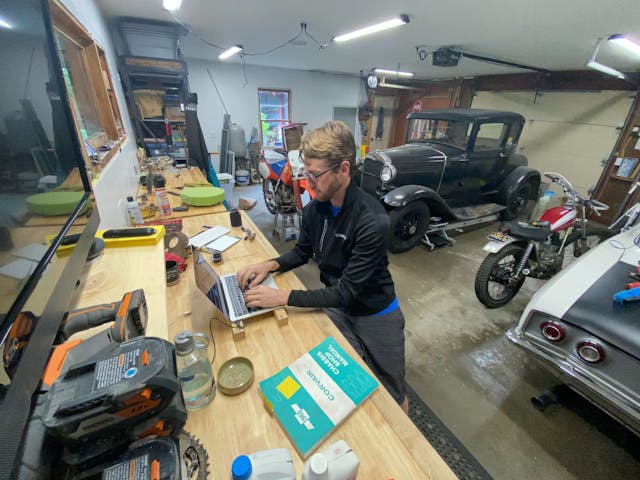
You saw that cool hunk of metal on the side of the road and just had to have it. Now you got it home and are excited to get to work and … Wait, there are no parts available for this? Sometimes the coolest models are the ones with the most problems and buying one that needs everything without realizing none of the parts exists is the gearhead’s version of falling in love with a crazy person: You often can’t give them what they need, and if you try, you’re going to be doing a lot of work (and probably spending a lot of money).
Rite of Passage #8: First rebuilt engine start-up
The thrum of a well-tuned engine is magnificent, but the stutter and cough of one chugging to life for the first time is even more enthralling. Was everything assembled correctly? Was anything forgotten? How is the combination of parts you chose going to work together? It all becomes clear with the first touch of the key. Weathering that storm of nerves is an experience unlike any other.
Rite of Passage #9: Ruined clothes
It was supposed to be a quick, clean job. Now that pair of jeans that used to be nice is stained with oil. (The situation is even worse if you’ve just ruined a pair of pants that your significant other specifically told you not to wear in the garage.) Typically when doing DIY work you dress to protect, not to impress. Hubris may protest, calling that an obvious truth, but the drawer of “work clothes” indicates we occasionally need a reminder.
Rite of Passage #10: Inclement weather moving in

Having a garage is a luxury that some of us take for granted. Most of us started by working on whatever we had wherever we could: Laying on our backs in gravel driveways, sitting cross-legged on the dirt of the back yard, or even leaning over core supports on the side of the street. If the sun was shining when you started work, your lack of protection from the elements becomes obvious as the clouds gather and the wind picks up. Being soaking wet, cold, and/or dirty while trying to assemble or diagnose your car is not fun, but we all must experience this misery to truly appreciate mild weather and good shelter.
Rite of Passage #11: Fixing what is not broken

The excitement to work on a project is sometimes so great that it must be satiated—even when there is work that needs to be done. I personally recall my father giving me the “if it ain’t broke, don’t fix it” speech while in my early teens; I had just made a mess of the garage floor taking apart something that had worked when I started and, more than likely, would never work correctly again. Poor thing.
Do you have to go through all of these to be a decent mechanic? Of course not, but many of us have experienced most, if not all, of these and more. Think we missed a rite of passage that changed you? Let us know about it in the comments below.
***
Check out the Hagerty Media homepage so you don’t miss a single story, or better yet, bookmark it. To get our best stories delivered right to your inbox, subscribe to our newsletters.
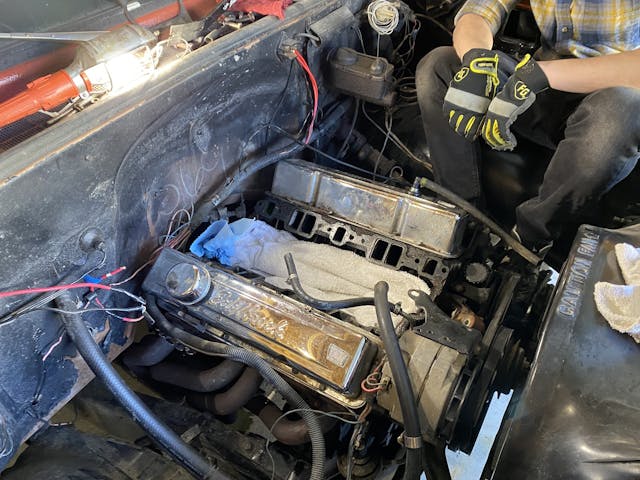


For it has always been and always will be dropping the obscure small but washer bolt or screw into some unknown cavity never to see it again, all the whole hoping it do not drop into some open orifice that will lead to incalcuable damage. Still happens today.
Add… Rounded off and broken off bolts, and correcting the dreaded PO (Previous Owner) makeshift repairs.
I must be a fantastic mechanic – I’ve lived all of those rites of passage (many times over)’ My fondest roadside recover occurred when I was a young Airman stationed at a small airbase in Oregon. I moonlighted in the base auto hobby shop because of my mechanical skills (could identify most common hand tools & could use several with only limited supervision). One Sunday afternoon I tuned up my own well used 1949? Ford. This involved cleaning the spark plugs, filing/setting the points and filing the tip of the rotor and contact points in the distributor cap. After topping it up with oil I took off through the surrounding countryside on a test ride. Roughly 5 miles out in the sticks on a lonely back road my pride and joy died. No sputtering or jerking – the motor just went silent. I jumped out and proceeded to trouble-shoot (being a qualified mechanic and all). All the spark plugs were accounted for and were connected to a wire. However when I removed the distributor cap I found the rotor broken. A big piece of plastic (Bakelite or whatever) had broken off the base of the rotor and the rotor could no longer spin. The only phones in those days were the ones that hung on the wall. Anyone remember the upholstery in those old Fords – kinda like woven strands of plastically-feeling stuff? And when worn through was like Phyllis Dillers hairdo? Yep, I took my pocket knife and cut off several inches of that fiber(?) and used it to wrap around the broken rotor pieces. It held the rotor together long enough for me to putter slowly back to the base. I know what you’re thinking – that I hadn’t mushed that rotor down securely onto the distributor shaft & was lucky that it even worked enough to get me out in the sticks. Naaa. Then there was the time I dropped a distributor into my SBC chevy after replacing the manifold & discovered that it was 180 out. I discovered that after cranking the engine over when I heard the enormous explosion and found my two custom mufflers split wide open. I could go on but I’ll leave you with those two examples of my qualification to be called (uh…something). Even in my current twilight years I still fiddle with a collection of mechanical projects and have yet to burn down the shop or incur any permanent disabilities. But now I’ve gained the right to forget to tighten bolts or replace oil pan plugs and that sort of thing. I keep my wife nervous. Anybody need a hand fixin’ your Ferrari – just give me a call.
good stuff, informative & I noticed 2 Corvairs in the pictures….Awesome!
1968. Driving a ’65 Corvette white fuelie coupe. Last year for mech injection, 1st year for 4 wheel disc brakes. GM didn’t get the brakes quite right. Both front calipers leaking, rebuild kits on backorder. Got 2 brass line couplers, brazed one end shut. Then used them to block/seal both front caliper hoses. Drove the ‘vette with just rear brakes, felt really weird. But I was careful, it was the only car I had. Probably lasted about 3 weeks. It was a great car. Had to sell it in the middle of a divorce…. Still miss it.
It was late 90’s, I was stationed in San Diego on active-duty Navy and signed up for the Tecate 250 in Mexico. The ride started at 7am, I was riding a 97 Honda CR500 enroute to the halfway point where course workers were nice enough to stage the riders fuel for the second half the trip. Had to make the halfway point and refuel by noon or you were not allowed to continue, and risk being stuck out in the middle of nowhere after dark. I crossed a roadway where an older lady was sitting on the side of the road in a 69 Toyota Corolla that looked like needed lots of TLC. She was cranking away with no luck getting it started. I stopped, checked for air, fuel, spark and determined the points were burned out. I walked up and down the sides of the roadway until I found a gum wrapper, peeled the foil off the wax paper and carefully wrapped foil around each arm of the points. It fired right up. I did not speak Spanish and she did not speak English, but I knew what a nod and a smile meant! I still had time to make the check point, refuel and ride to the finish while crossing sections of the Baja racecourse. You thought you were reading a motorcycle story.
Not a rite of passage but a fun story. I am 66 now and have been working on anything with wheels and an engine since 15 and like most here have many stories.
Ok two motorcycle ones.
I was in nowhere Virginia on my MuZ 500 Saxon (rotax) when I came across a pair of Harly riders by the side of the road. One bike with a fuel problem. The heat had melted the plastic fuel hose in a spot and they did not have any hose to long enough to go from tank to carb. I had a ball point pen that I removed the ink part and cut up a short section to act as a tube to connect the two hose ends. (I hope the guy got home, not sure what if the gas would react and melt the pen part.)
One year I was at “Sportbike Canada, in Perry sound. A kid there on a Rz-350 (cool bikes we never get in the states) had a shifting problem. The splines on the shift shaft were mangled and the lever was slipping.
Someone suggested using thin wires between the shaft and the splines. I found the bulletin board at the rally and there were some staples in it, that I pried loose to make the wires. (I think the kid made it back to Toronto. )
– Spending an hour and a half trying to press out a ball joint because I forgot to remove the snap ring first.
– Using a beer can, a small garden shovel, and hose clamps to mend an exhaust that separated from the cat.
– Replacing everything except the bad wheel bearing in order to fix a bad wheel bearing.
– Having a radiator explode in an E36 BMW and driving it back home with the expansion tank cap off, two 1 gallon milk jugs filled with water and a filled bucket of water in the passenger seat footwell. Stopping every 2 miles to add water on a 10 mile drive home.
– A rubberband and crazy glue to repair a rubber fuel line that was got sliced by a random piece of metal on the highway.
– My favorite one was when I didn’t loosen the rocker bolts on an LS engine when replacing a cam gear. I drove it for 300 or so miles before the end play caused a roller lifter to turn and snap the roller right off. The busted metal falling into the oil pan, clogging the pickup tube, and ultimately resulting in a spun rod bearing and a ruined crankshaft.
Fun adventures and lessons learned.
Repairing broken / rusted exhaust pipes with soup cans and screw clamps. Automotive bandaid #439.
Inclement weather is hardly a thing where I live, but the 2014 “snowpocalypse” was when I had no option but to change out the clutch in my daily driver (in the driveway of the house I was renting). A few months later, I bought a house with a 2-car garage.
In today’s age, it is being ripped off over an Internet order. Luckily, there are usually more stories of people going above and beyond to help you out. The guys who rebuilt the head, the transmission and alternator of my 1965 Ford F100 all come to mind.
Memorable road side repair: I was on a vacation driving my ’76 Ford Supercab Pickup, 390 engine with 4 barrel carb and I start smelling gasoline. Awhile later at my campsite I could see that the carb was leaking. I took it off of the engine and took it to the picnic table. By the way it’s now starting to get dark! I found that a small o-ring was damaged. I wrapped a few layers of teflon tape on it and put it back together. It worked perfectly! The next day at a parts store I bought a new o-ring and a couple months later I used it to replace the teflon tape.